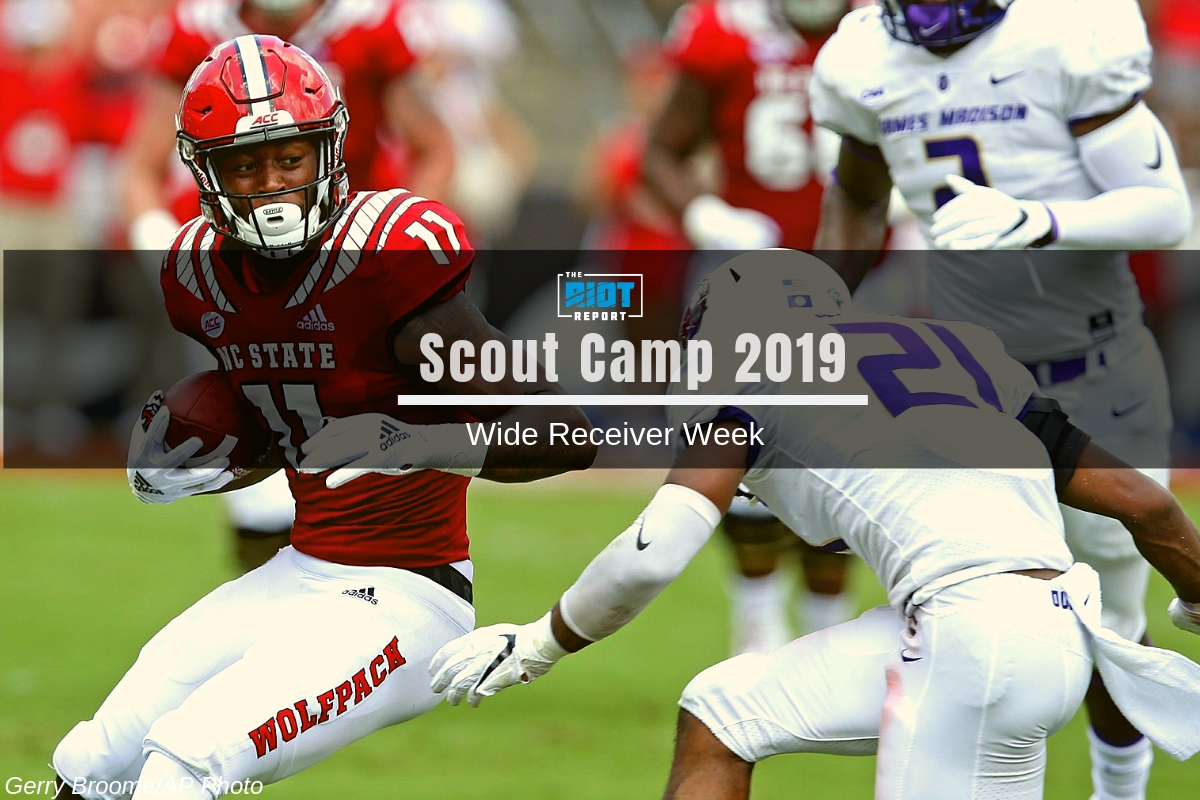The Important Stuff
Having largely ruled out the possibility of Meyers consistently separating using speed, for him to be able to play a significant role in an NFL offense, he will have to rely on his route running. So how does he get on in this regard?
Meyers is something of a mixed bag, as he does some very nice things but struggles in other ways. The thing he does well is use changes of directions at the head of routes to create separation, this is particularly relevant to routes where the final cut occurs at low speed, such as the following:
What Meyers does well here is that he initially cuts slightly inside, forcing the defender to flip his hips inside before taking an upfield step to hold the defender before he eventually breaks outside. This ability to force a defender to hesitate is something he also shows here:
When he isn’t able to force the defender to flip his hips, he then does a good job of creating separation by actually instigating contact at the head of the route before using his strength to effective push off the defender to create momentary separation:
All of these are good things, but there are also some issues. When he is asked to run routes which need to get open quickly – routes where he isn’t afforded the luxury of being able to hesitate at the head of the route, his actual change of direction isn’t great, and as impressive as the contested catch he makes on the following play is, it really shouldn’t be necessary if he was able to come out of his break more smoothly:
This might be something that can be improved on, but there is a reasonable chance that this is just due to his athletic limitations, and this problem only gets worse when asked to make cuts at high speed. On the following play, he actually does a decent job of getting upfield and into his route, but when he breaks inside, the defender doesn’t seem to find it hugely difficult to go with him.
This isn’t a deal-breaker, as his limited deep speed means that most of his work is likely to come on underneath routes where low-speed cuts are more prevalent, but is further evidence that Meyers’ ceiling is somewhat limited. Of course, there is more to getting open that just route running, as in order to even get that far, a player must be able to get off the line should the defense look to press him. This isn’t something Meyers faced a lot in college, and I couldn’t find any examples of him facing a hard press – though I cannot claim to have watched every snap he played – but he did some nice things against soft press.
This is a similar concept to what he did earlier to get open – only here, the slow cut occurs at the line. Another positive note is that he did a good job of dealing with contact during his route:
But he also showed a tendency to just try and run his route as if the defender wasn’t there, rather than trying to get them to move out of the way using his feet:
All in all, it is probably fairest to say that his tape is inconclusive in this regard, and while this doesn’t mean he can’t get off the line against NFL defensive backs, it would be foolish for me or anybody without additional information to assume he can. This is likely something that teams interested in Meyers will look to test during workouts.
Meyers might not be an elite route runner, but he does show a nice understanding of how to create underneath separation, and while his relative value as a route runner is quite dependent on the route in question, given his lack of vertical speed, there is at least a compatibility between his strengths as an athlete and his strengths as a route runner.
Up Next: The Added Extras



